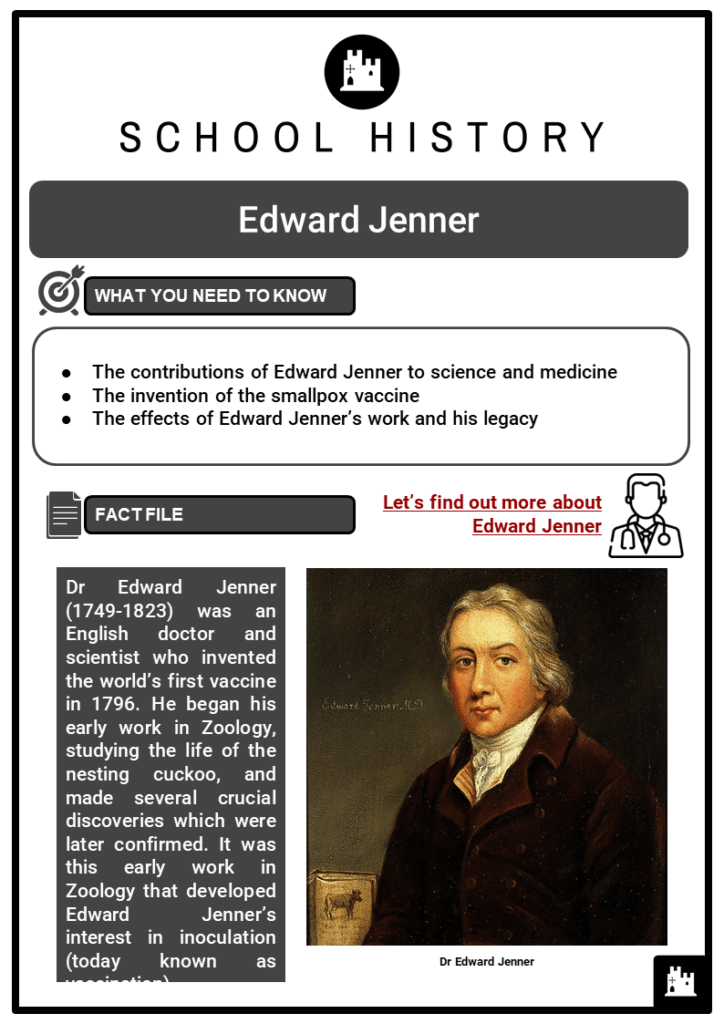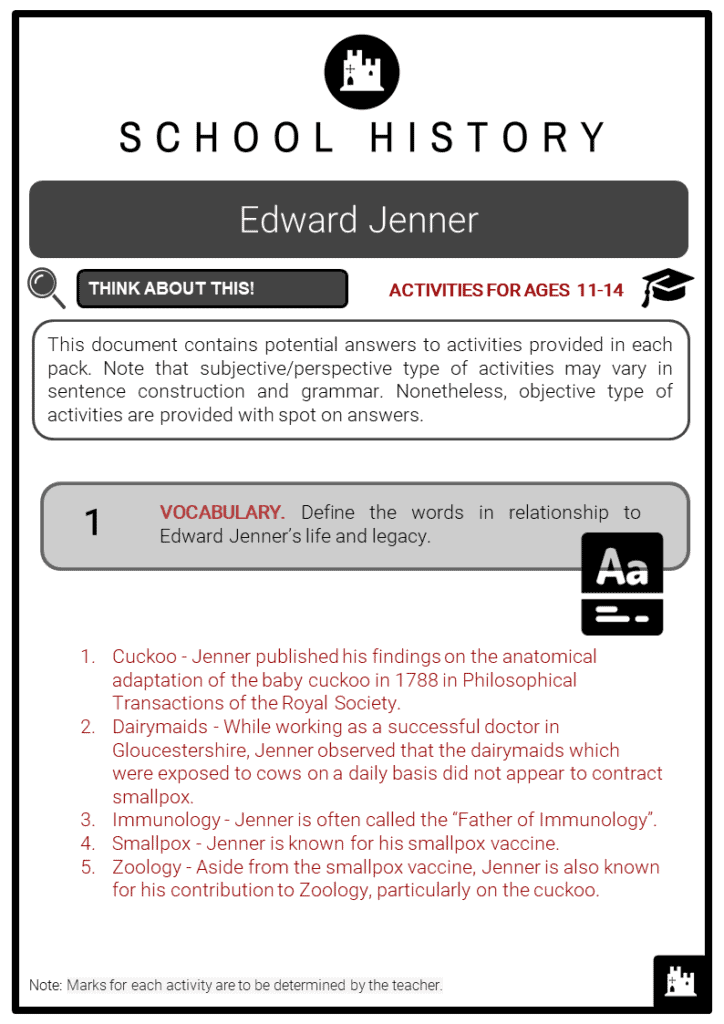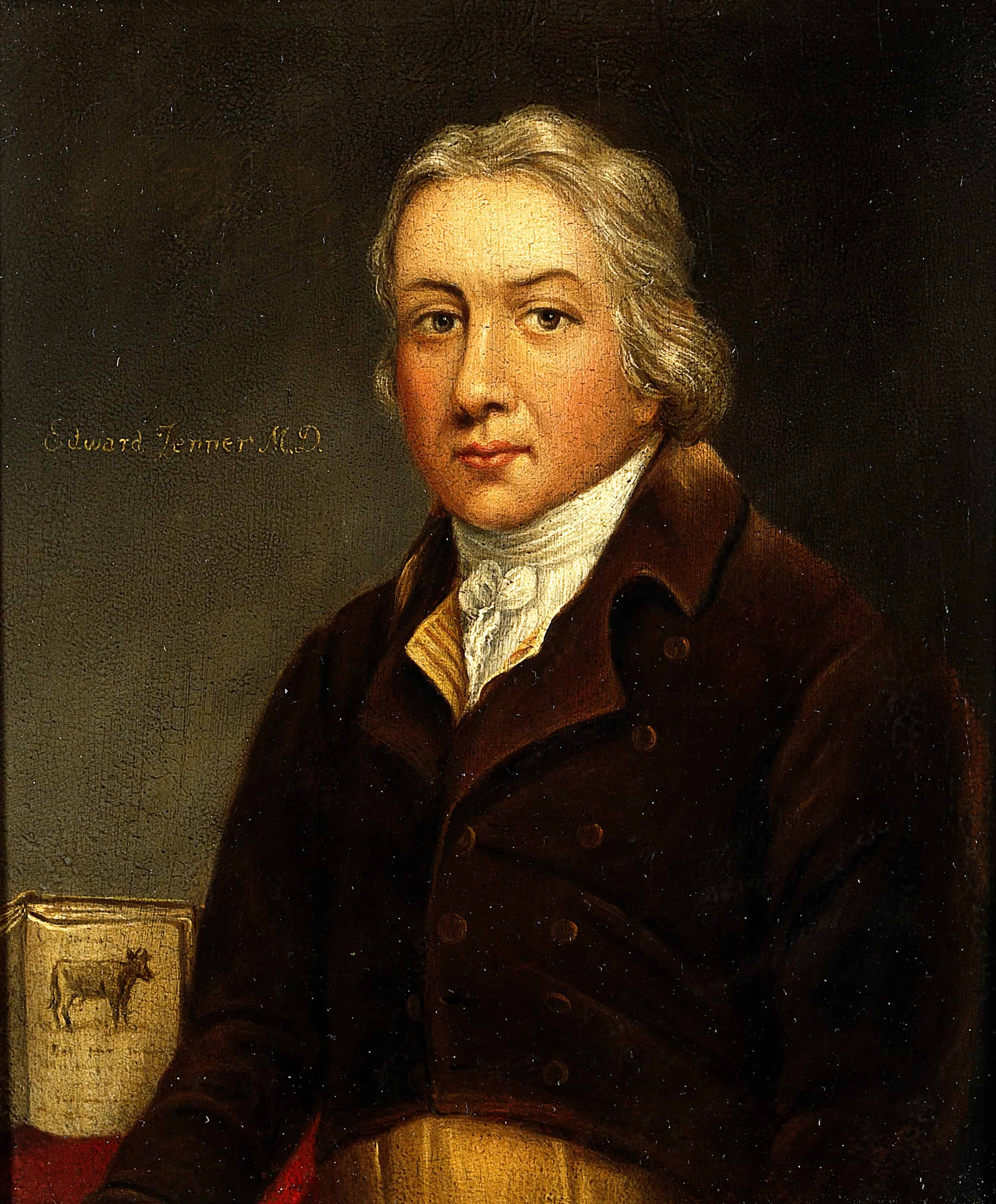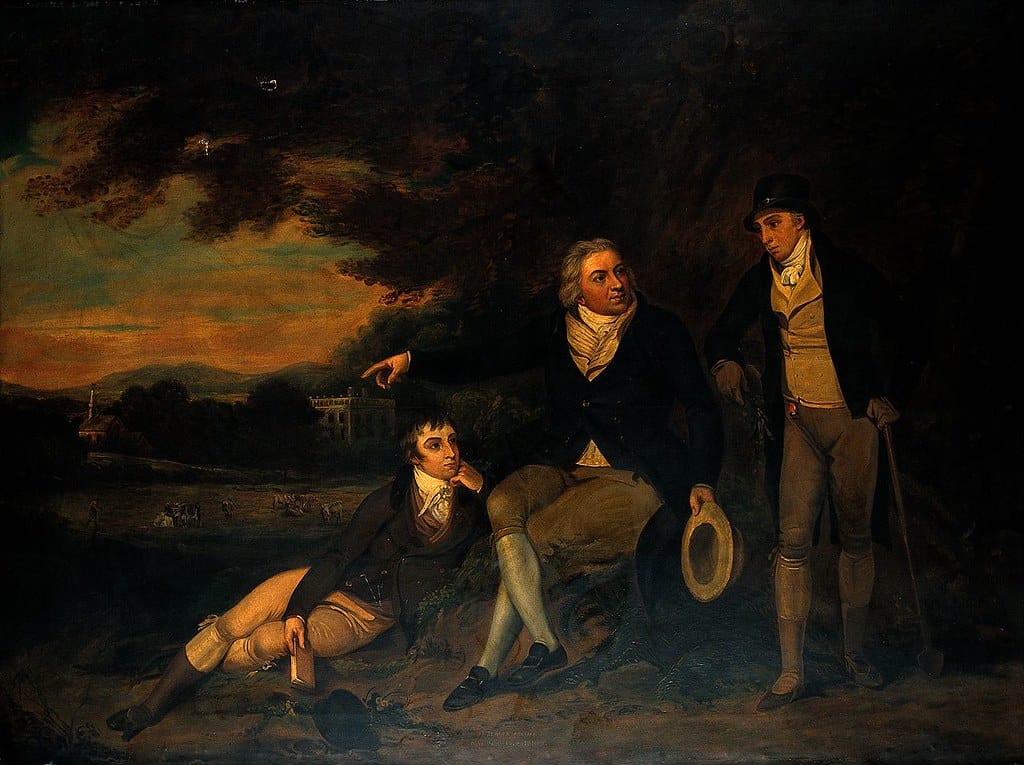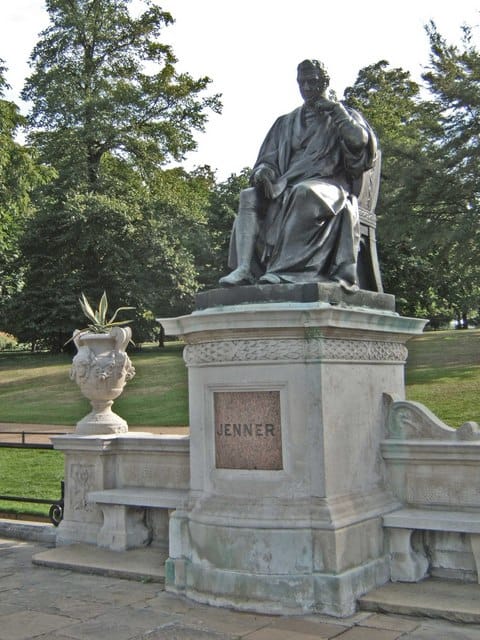Download Edward Jenner Worksheets
Do you want to save dozens of hours in time? Get your evenings and weekends back? Be able to teach Edward Jenner to your students?
Our worksheet bundle includes a fact file and printable worksheets and student activities. Perfect for both the classroom and homeschooling!
Table of Contents
Add a header to begin generating the table of contents
Summary
- The contributions of Edward Jenner to science and medicine
- The invention of the smallpox vaccine
- The effects of Edward Jenner’s work and his legacy
Key Facts And Information
Let’s find out more about Edward Jenner
- Dr Edward Jenner (1749-1823) was an English doctor and scientist who invented the world’s first vaccine in 1796. He began his early work in Zoology, studying the life of the nesting cuckoo, and made several crucial discoveries which were later confirmed. It was this early work in Zoology that developed Edward Jenner’s interest in inoculation (today known as vaccination).
- Born and raised in Gloucestershire, Jenner received his medical training first as a local apprentice, and then as one in anatomy and surgery at St George’s Hospital in London from 1770. Following his training, Edward Jenner became a successful doctor running his own practice in Berkeley, his hometown. Later, in 1792, Jenner acquired his MD from the University of St Andrews.
Edward Jenner’s Work in Zoology
- Jenner conducted an extraordinary study into how a newly hatched cuckoo would push its host’s eggs out of the nest.
- This contradicted existing convictions that the adult cuckoo performed this task.
- He published his findings on the anatomical adaptation of the baby cuckoo in 1788 in Philosophical Transactions of the Royal Society.
- Following his study of the nested cuckoo, Jenner was elected as a fellow of the Royal Society in 1788 to recognise his achievements.
- However, Jenner’s understanding and findings on the cuckoo’s behaviour was not entirely believed until it was supported by the artist and bird life observer, Jemima Blackburn.
- Jenner’s findings were so striking that when confirmed they forced Charles Darwin to revise his later edition of On the Origin of Species.
- While his groundbreaking work in Zoology is not what Edward Jenner is most famous for, this understanding of both animal biology and human anatomy is what drove his interest in and understanding of inoculation (vaccination).
- His studies of animals had a huge impact on his very first vaccination experiment and with hindsight, it makes sense that Jenner knew a lot about animals and humans alike, because many vaccinations today come partly from animals.
The Invention of the Vaccine
- Immunisation was already being practiced in medicine by the time Jenner invented the smallpox vaccine.
- Smallpox epidemics were very common in the 18th and part of the 19th century. They had a high mortality rate and claimed tens of thousands of lives at this time.
- Lady Mary Montague had first seen inoculation (exposing a person to a low dose of a disease to then make them immune to a more serious outbreak) on a visit to Turkey.
- She introduced the practice to Britain. However, these procedures, although standard practice, involved serious risks including that the inoculated persons would become carriers of the disease and transfer it to those around them. They were also very expensive.
- While working as a successful doctor in Gloucestershire, Jenner observed that the dairymaids which were exposed to cows on a daily basis did not appear to contract smallpox. It seemed that they were immune.
- This led Jenner to believe that those who had caught cowpox were immune to smallpox.
- However, although Jenner’s findings had the potential to help eradicate smallpox once and for all, there were several objectors to it (including the Royal Society).
- Many were shocked and suspicious of the idea that cowpox could cure a disease that was human. There were also doctors that earned their wages out of inoculations – they did not want to lose that income.
- Finally, vaccination was seen as dangerous – especially as doctors often used infected and non-sterile needles.
- After the Royal Society rejected him, Jenner published his findings on his own and named his technique vaccination (‘vacca’ being the Latin word for cow) to separate it from the commonly used method, inoculation.
The Legacy of Edward Jenner
- The British Parliament, impressed by Jenner, gave him £30,000 to be used to open a new vaccination clinic in London.
- Not only did Jenner help revolutionise and really kickstart immunology research and practice in medicine, but his reach was global and not just national.
- In 1803, American doctors began using his ideas.
- Meanwhile, in 1805 even Napoleon himself demanded that his soldiers be vaccinated.
- Finally, in 1853, after a deadly smallpox epidemic had once again claimed many lives, the UK government passed the Vaccination Act.
- The new law required that everyone gets vaccinated against smallpox. It made vaccination not only compulsory but also free.
- Jenner’s discovery had made a huge contribution to public health, by introducing not only a lasting immunisation method but also a cost-efficient one.
- Widespread immunity, which began with this single discovery by Jenner, eventually helped eradicate smallpox entirely by 1979.
- In recognition of his achievements, in 1802 Jenner was elected as an honorary member of the American Academy of Arts and Sciences as well as a foreign member of the Royal Swedish Academy of Sciences in 1806. Today Jenner’s statues can be found across the UK, as well as the United States and in museums in other countries too.
- While smallpox was the very first disease that a vaccine was developed for, following Jenner’s discovery the medical research community built on his work and developed vaccinations for many other common diseases.
- According to the World Health Organization (WHO), today there are vaccinations available against 25 preventable infectious diseases, all of which operate on Jenner’s original principle.
- His essential idea that a mild form of a disease can help immunise against the disease itself has been taken to advanced laboratories and proven using observation and experimentation equipment.
- It has saved hundreds of thousands of lives and continues to be one of the greatest medical achievements in the history of humankind.
Image sources:
[2.] https://live.staticflickr.com/286/18933457791_cbc5c76f86_b.jpg

